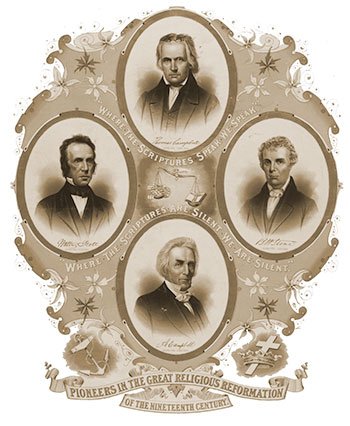1832-2020 Shandong Province Revivals

Indigenous Chinese Missionaries
Shandong Province in China boasts a rich religious history, with periods of revival and spiritual awakening occurring amidst times of hardship and persecution. This article delves into the history of these revivals, spanning from 1832 to 2020, drawing upon various sources to provide a comprehensive overview.
Early Missionary Efforts and the First Awakening (1832-1879)
The seeds of Christianity in Shandong were sown in the early 19th century. In 1832 and 1833, German pioneer missionary Karl Gutzlaff visited coastal areas of the province, distributing Christian literature and medicine1. While his reception varied, with some villages displaying unfriendliness, Gutzlaff’s efforts marked the beginning of Protestant missionary work in Shandong1.
Following Gutzlaff, other missionaries arrived, with the first permanent settlers establishing themselves in Shandong in 18602. However, conversions were initially slow. It wasn’t until 1866 that a significant “religious awakening” was reported in Leling, in the northwest of the province2. This awakening led to a surge in baptisms and the establishment of preaching stations, churches, and schools2. By 1879, the number of converts had grown significantly, with 28 missionaries and 25 Chinese missionaries serving in the province2.
Revival in the Midst of Turmoil (1900-1949)
The early 20th century was a turbulent period for China, marked by political instability, war, and social unrest. Despite these challenges, Christianity continued to grow in Shandong. At the dawn of the new decade, Evangelical churches in Shandong numbered a little more than 1,000 converts3. The Boxer Rebellion of 1899, a violent uprising against foreign influence, targeted Christians and missionaries4. However, the church emerged from this persecution stronger and more resilient.
In the 1920s, a renewed wave of revival swept through Shandong2. This was a time when the church in China was in a state of decline, with many churches described as “cold and apathetic.” 5 Opium use, a symptom of spiritual apathy, was prevalent among some church members5. Notable healings and deliverances took place, awakening believers and igniting a zeal for evangelism2. It was also during this time that the Great Shandong Revival began in 1927, characterized by its Pentecostal features and its significant impact on the growth of indigenous Chinese churches6.
The 1930s witnessed a powerful outpouring of the Holy Spirit in Shandong6. This revival, known as the Shantung Revival, was marked by deep confessions of sin, public repentance, and a renewed commitment to Christ6. Churches that had become stagnant were revived, and church attendance increased dramatically6. This revival was unique in that it displayed distinct Pentecostal features, such as an emphasis on the “baptism in the Holy Spirit” and accompanying manifestations, even though it occurred within a predominantly non-Pentecostal context5. This suggests a growing openness to Pentecostal experiences within the Chinese church during this period.
One of the key factors contributing to this revival was “earnest prayer by groups and individuals, faith in God, Bible study, teaching, and much preaching on sin and kindred subjects.” 5 As the Spirit of God moved, many people gained insights into the supernatural realm, leading them to repent of their sins. Some saw visions of heaven, while others saw visions of hell, prompting them to turn to Jesus Christ for salvation7.
The Power of Prayer in the Shandong Province Revivals
Prayer played a vital role in the revivals in Shandong. Many accounts highlight the importance of prayer meetings, both in preparation for and during the revivals5. Chinese churches united in prayer, seeking God’s intervention and renewal5. One of the slogans used during this time was, “Lord, revive Thy Church, beginning with me.” 5
Missionary Mary Crawford noted that the revival “was born out of prayer groups, definitely asking for revival, some of them dating back as far as 1925.” 5 These prayer groups provided a foundation for the outpouring of the Holy Spirit that would sweep through the province.
Jonathan Goforth, a Canadian Presbyterian missionary who witnessed revivals in various parts of China, emphasized the importance of prayer and confession of sin. He said, “Then when I did all I could, God did what He could, and I firmly believe He will give to us all the divine fullness.. 8
Perseverance Under Pressure (1950-2020)
The latter half of the 20th century brought new challenges for Christians in Shandong. The Communist takeover in 1949 led to increased persecution and restrictions on religious freedom4. The Cultural Revolution (1966-1976) further intensified this persecution, with many Christians suffering imprisonment, torture, and even death4.
Despite these hardships, the church in Shandong persevered, demonstrating remarkable resilience in the face of adversity4. In the 1980s, as China began to reopen to the West, there was a renewed emphasis on evangelism and church planting4. The Project Pearl Bible smuggling operation played a significant role in providing Bibles to believers who had been deprived of Scripture for decades4.
The 1990s saw a rapid spread of the Gospel in Shandong, with both official Three-Self churches and underground house churches experiencing significant growth4. Radio broadcasts from Hong Kong and other sources helped to nurture believers and spread the message of Christ4. This period also saw challenges, with the province swarming with bands of bandits and internal conflicts arising within the church4.
Leaders and Churches
Throughout the history of revivals in Shandong, various individuals and churches played significant roles. Karl Gutzlaff, the pioneer missionary, laid the foundation for Protestant missions in the province1. John Nevius, a Presbyterian missionary, emphasized self-support and indigenous leadership in the church2.
The Southern Baptist Convention played a prominent role in the Shantung Revival of the 1930s5. Missionaries such as John Abernathy and C.L. Culpepper documented the revival and its impact on the church in Shandong5.
It is important to recognize the crucial role that indigenous Chinese leaders played in the growth and development of the Shandong church4. These leaders, including evangelists, pastors, and lay people, were instrumental in spreading the Gospel, establishing churches, and nurturing believers. Their dedication and commitment were essential to the success of the revival movements.
Manifestations of the Holy Spirit
The revivals in Shandong were often accompanied by various manifestations of the Holy Spirit. These included:
- Conviction of Sin and Repentance: Many people experienced a deep sense of their sinfulness and a need for forgiveness. The Shantung Revival, in particular, was characterized by “deep confessions of sin as the Spirit of God moved on people and exposed parts of their lives that displeased the Lord Jesus.” 6
- Public Confession: Public confession of sin was a common feature of the revivals, as people sought to make amends for their wrongdoing. This was “completely contrary to the typical reserved Chinese culture,” highlighting the transformative power of the Holy Spirit6.
- Healings and Deliverances: Numerous accounts of physical healings and deliverances from demonic oppression were reported during the revivals. For example, during the 1930s revival, there were reports of crippled legs being healed, tuberculosis being cured, and paralysis being overcome2.
- Visions and Prophecy: Some individuals experienced visions of heaven and hell, while others received prophetic messages. In one instance, a Christian praying during a meeting saw a vision of a pitchfork, which led to conviction and repentance in the church7.
- Increased Prayer: A spirit of prayer permeated the revivals, with individuals and groups devoting themselves to seeking God. Many parents were saved through the prayers of their children, and people would spend hours singing and praying during church services2.
Results and Impact
The revivals in Shandong had a profound impact on the province and the church in China. Some of the key results included:
- Church Growth: The revivals led to significant increases in church membership and the establishment of new churches7.
- Spiritual Transformation: Many individuals experienced a radical change in their lives, turning away from sin and embracing a life of faith7.
- Increased Missionary Activity: The revivals inspired greater missionary activity, both from within China and from overseas7.
- Social Impact: The revivals had a positive impact on society, leading to improved morality, reduced crime, and greater social harmony. Idols were torn down, reconciliation took place, and crooks and thieves were transformed into humble men who became soul-winners2.
Relationship to the Second Great Awakening
The revivals in Shandong occurred during a period of global religious revival, including the Second Great Awakening in the United States (1790-1840). While there is no direct evidence of a causal link between these movements, they shared some common characteristics, such as an emphasis on personal conversion, emotional religious experiences, and social reform10.
Conclusion
The history of revivals in Shandong Province is a testament to the power of the Holy Spirit to transform individuals, communities, and nations. Despite facing periods of intense persecution and hardship, the church in Shandong has continued to grow and thrive. These revivals serve as an inspiration and encouragement to believers around the world, reminding us that God is still at work in our world today. The perseverance of the Shandong church echoes the experiences of Christians throughout history and across the globe who have faced persecution for their faith. Their story reminds us that even in the darkest of times, the light of Christ cannot be extinguished.
Chronological Timeline
| Year | Event |
| 1832-1833 | Karl Gutzlaff distributes Christian literature and medicine in Shandong. |
| 1860-1879 | Early Missionary Efforts and First Awakening: First permanent Protestant missionaries settle in Shandong; religious awakening in Leling; Leling missionary report leads to growth. |
| 1899 | Boxer Rebellion targets Christians. |
| 1900-1949 | Revival in the Midst of Turmoil: Missionary Calvin Mateer calls for spiritual renewal; first documented spiritual awakening; Shantung Revival. |
| 1949 | Communist takeover of China. |
| 1950-2020 | Perseverance Under Pressure: Revival among young people; Cultural Revolution; Project Pearl Bible smuggling operation; rapid spread of the Gospel; another revival in Shandong; consolidation of Christianity in Shandong. |
Works cited
- 1860s – Asia Harvest, accessed on December 16, 2024, https://www.asiaharvest.org/china-resources/shandong/1860s
- 1832-2020 – China’s Shandong Province Revivals – BEAUTIFUL …, accessed on December 16, 2024, https://romans1015.com/shandong/
- 1880s & 1890s – Asia Harvest, accessed on December 16, 2024, https://www.asiaharvest.org/china-resources/shandong/1880s-1890s
- Shandong: The Revival Province – Book Review — Global China …, accessed on December 16, 2024, https://www.globalchinacenter.org/analysis/shandong-the-revival-province-book-review
- THE SHANTUNG REVIVAL (1927-1937) – BEAUTIFUL FEETBEAUTIFUL FEET, accessed on December 16, 2024, https://romans1015.com/shantung-revival/
- Pentecost in China (1) – ChinaSource, accessed on December 16, 2024, https://www.chinasource.org/resource-library/articles/pentecost-in-china-1/
- The encouraging signs of spiritual life that emerged … – Asia Harvest, accessed on December 16, 2024, https://www.asiaharvest.org/china-resources/shandong/1930s
- Jonathan Goforth: Revivals in China – Prevailing Intercessory Prayer, accessed on December 16, 2024, https://www.path2prayer.com/revival-and-the-holy-spirit/jonathan-and-rosalind-goforth/jonathan-goforth-revivals-in-china
- The Shantung Revival – Robert Reynolds Family Archives, accessed on December 16, 2024, https://www.reynoldsarchives.com/shantung_revival.htm
- Introduction to the Shandong Revival–Historical Context | a mission-driven life, accessed on December 16, 2024, https://missionsforum.wordpress.com/2007/11/13/introduction-to-the-shantung-revival-historical-context/



